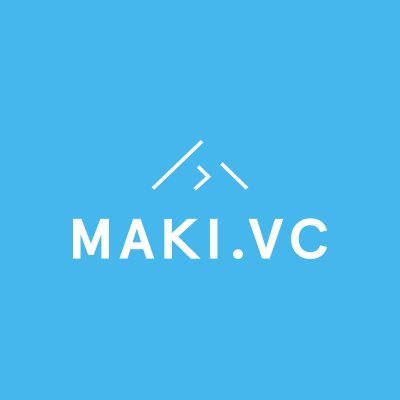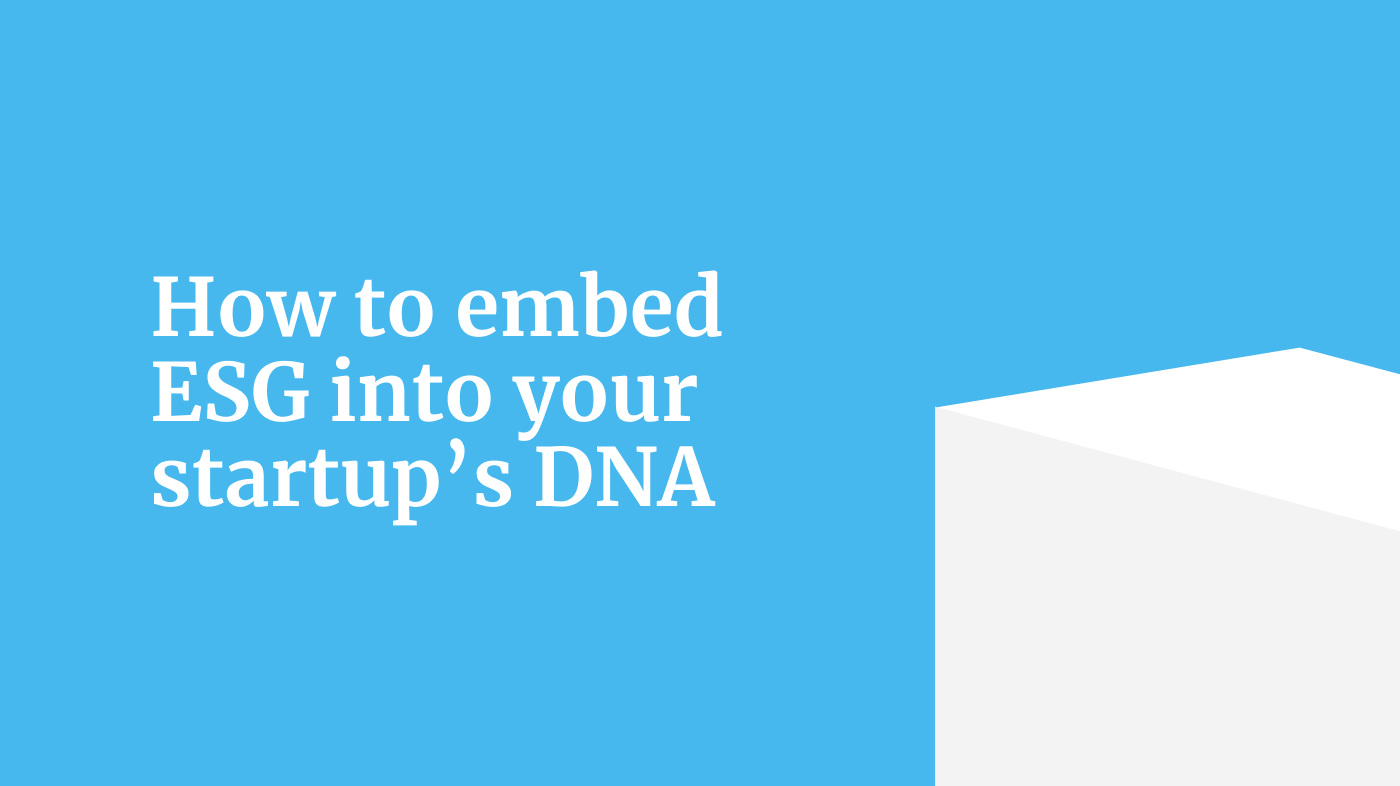Maria 01, Building 5, entrance B
Lapinlahdenkatu 16, 00180 Helsinki
Making history? lets@maki.vc
Press inquiries: press@maki.vc
Blog | May 16, 2023
 WRITTEN BY Maki Team
WRITTEN BY Maki Team

We’re not going to dive into a lecture on ESG. Instead, we're going to take a closer look at what it means for startups and share some of the best practices to incorporate ESG into your company strategy. In other words, how your company and product can contribute to sustainability.
What’s important to understand, and often gets mixed up in this discussion, is the difference between Operational Sustainability and (external) Impact. Operational Sustainability refers to the internal practices of an organization and is most often referred to as Environmental, Social, and Governance (ESG) aspects. And this is what we’re going to touch upon in this blog – but in a startup context.
Even though VC funding for early-stage startups slumped in Q3 of 2022 to $34 billion (a decline of 39% year-over-year) dished out in 1817 deals, it’s still a mammoth increase compared to what the industry raised 10 years ago – $1.7 billion in Q3 2012 through 395 deals. And according to the European Startups report 3.2 million people will be employed in European tech by 2025 at a 10% year-over-year growth.
In short, startups are carving a significant space in the global economy and it’s much easier to embed ESG in the company’s DNA from the get-go than to try and retrofit it at a later stage. And we believe this distincts the winning companies. McKinsey’s report draws a link between ESG and cash flow in five ways:(1) facilitating top-line growth, (2) reducing costs, (3) minimizing regulatory and legal interventions, (4) increasing employee productivity, and (5) optimizing investment and capital expenditures. So it’s not only the investors who are interested in ESG but also your customers, employees, partners, and other key stakeholders along your journey to growth.
Here is how you can incorporate ESG actions into your company’s strategy from the earliest days:
A materiality assessment is an exercise designed to engage your stakeholders and find out how important certain ESG issues are to them. You can use these insights to not only guide your strategy but also communicate a more meaningful story about the ESG work you are doing.
A benchmarking exercise is another good way to assess how mature ESG initiatives are among your competitors and further analyze opportunities and challenges in the space. Keep in mind that the importance and relevance of ESG topics do vary by company, industry, and stakeholders.

To be able to assess the ESG performance of a single company or in our case across our portfolio, the ESG goals and progress must be measurable. We collect ESG data on a yearly basis and use the insights gathered to educate our team and portfolio companies in ESG matters.
Start by setting your ESG KPIs for the first year and track them continuously using relevant metrics. Over time, you can introduce new KPIs as the company grows.
Here are a few different examples of how to set your ESG approach from Maki House companies that are in different stages of their lifecycle:
First is Altum Technologies which has partnered with Gaia to scope their sustainability targets and actions for 2023. Here’s an example of one of their three sustainability goals and how to measure it:

The next example is the alternative protein company Volare which has started to build their ESG framework based on company values:
 Hyvönen reminds that even though values alone are not enough, they do guide and give a baseline for their ESG work. And in practice, Volare perceives the impact of their action on three levels:
Hyvönen reminds that even though values alone are not enough, they do guide and give a baseline for their ESG work. And in practice, Volare perceives the impact of their action on three levels:
The final example is from food-biotech Onego Bio and their Head of Public Affairs and Impact Anna Handschuh.
 As a frontrunner in precision-fermentation-made food Onego Bio is in a challenging ESG playing field. Food made by precision fermentation is a revolution and legislators are starting to understand now that this new product category and the business behind it will fall in a new category of ESG related disclosures and risks. In other words: Classical ESG approaches would fall short when it comes to an integration in the business.
As a frontrunner in precision-fermentation-made food Onego Bio is in a challenging ESG playing field. Food made by precision fermentation is a revolution and legislators are starting to understand now that this new product category and the business behind it will fall in a new category of ESG related disclosures and risks. In other words: Classical ESG approaches would fall short when it comes to an integration in the business.
Therefore, Onego’s ESG approach is in the process of being aligned with Fairr and their initiative to build an ESG Framework for Alternative Proteins. Such industry-specific non-mandatory frameworks exist for many other industries, but ‘The GFI & FAIRR Alternative Proteins ESG Reporting Framework for Specialized Companies’ fills the void in Onego’s neck of the woods. It provides an open-source, holistic, and industry-specific tool that public and private alternative protein companies may use to report on their ESG performance in addition to mandatory reporting schemes based on the SFDR, SEC or future SDR.
Onego finds it important to work together with third parties like FAIRR and GFI to create shared standards for an emerging industry.
“We can only build new industry standards together – our ESG strategy is challenging on many accounts. Not only are we a science-based start-up, but also, we are part of a new food industry creating a totally new product category. For instance, on the product level, there are yet no rules to guide animal-free food companies on how to measure the environmental footprint of their products or ingredients. This means we need to co-create them based on environmental metrics and existing impact categories – and this can differ market by market“, states Anna Handschuh, Head of Public Affairs and Impact at Onego Bio.
In short, when setting actionable and measurable ESG goals be sure to at least focus on these areas:

After defining your KPIs, focus on the process next – how will you gather, store, and analyze the data? Startups, especially, can benefit a lot from collecting relevant ESG data right from the start. This will help you to not only adjust your company’s ESG KPIs and (hopefully) align them with global sustainability targets, but also get a competitive advantage in the process.
Today, investors, customers and other stakeholders are increasingly demanding transparency and accountability from businesses. Startups that proactively collect and report ESG data are able to demonstrate their commitment to responsible business practices – this can attract investors, build trust with customers, and enhance their overall reputation. ESG data collection also allows you to identify potential risks and opportunities – which is key to making informed decisions and adapting strategies when needed. By making ESG considerations a core part of your operations from the beginning, you are setting up your business for long-term success, sustainable growth, and positive societal impact.
After analyzing the data, start with reporting annually to the board and consider submitting a public ESG report with time.

VCs collect increasingly more ESG data. You can use the surveys to help you align your ESG thinking and where to focus. As VCs, we carry a wealth of information around ESG strategy, policies, and data collection methods, and we are happy to support and educate companies regarding related matters. Remember to ask your investor to send your company’s aggregated year-on-year ESG data back to you in case you don’t receive it automatically.
Like mentioned before, since what’s relevant to each venture depends on the stage, product, and industry to name a few, we aim to support each on a case-by-case approach.
So, when you’re looking to incorporate ESG actions into your company’s strategy be sure to reach out to your VC for guidance.